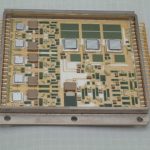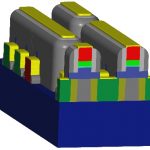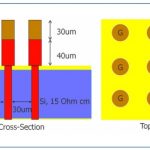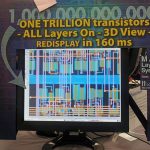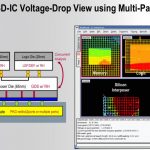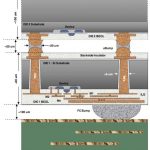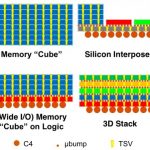Once upon a time (since every good story begins that way), I worked on 10kg, 70 mm diameter things that leapt out of tubes and chased after airplanes and helicopters. The electronics for these things were fairly marvelous, in the days when surface mount technology was in its infancy and having reliability problems in some situations.… Read More
Tag: 3d-ic
Advanced Node Design Webinar Series
At advanced process nodes, variation and its effects on the design become a huge challenge. Join Cadence® Virtuoso® experts for a series of technical webinars on variation-aware design. Learn how to use advanced technologies and tools to analyze and understand the affects of variation. We’ll introduce you to the latest Virtuoso… Read More
How Do You Extract 3D IC Structures?
The press has been buzzing about 3D everything for the past few years, so when it comes to IC design it’s a fair question to ask how would you actually extract 3D IC structures for use by analysis tools like a circuit simulator. I read a white paper by Christen Decoin and Vassilis Kourkoulos of Mentor Graphics this week and became… Read More
Enabling 3D-IC Integration
As 2D device scaling becomes impractical, 3D-IC integration is emerging as the natural evolution of semiconductor technology; it is the convergence of performance, power and functionality. Some of the benefits of 3D-IC, such as increasing complexity, improved performance, reducing power consumption and decreasing footprints,… Read More
One Billion Transistor IC Layout Editing
There are only a handful of billion transistor IC designs in existence today, so when an EDA company touts 1 trillion transistor IC layout editing then I take notice. This year at DAC I met with Katherine Hayes and Karen Mangum of Micro Magic to get an update on their IC layout tools.… Read More
RedHawk: On to the Future
For many, maybe most, big designs, Apache’s RedHawk is the signoff tool for analyzing issues around power: electromigration, power supply droop, noise, transients and so on. But the latest designs have some issues: they are enormous (so you can’t just analyze them naively any more than you can run a Spice simulation… Read More
Keeping Moore’s Law Alive
At the GSA silicon summit yesterday the first keynote was by Subramanian Iyer of IBM on Keeping Moore’s Law Alive. He started off by asking the question “Is Moore’s Law in trouble?” and answered with an equivocal “maybe.”
Like some of the other speakers during the day, he pointed out that … Read More
EDPS: 3D ICs, part II
Part I is here.
In the panel session at EDPS on 3D IC a number of major issues got highlighted (highlit?).
The first is the problem of known-good-die (KDG) which is what killed off the promising multi-chip-module approach, perhaps the earliest type of interposer. The KDG problem is that with a single die in a package it doesn’t… Read More
EDPS: 3D ICs, part I
The second day (more like a half-day) of EDPS was devoted to 3D ICs. There was a lot of information, too much to summarize in a few hundred words. The keynote was by Riko Radojcic of Qualcomm, who has been a sort of one-man-band attempting to drive the EDA and manufacturing industries towards 3D. Of course it helps if you don’t … Read More
Synopsys: now in 3D
And no red and green glasses required.
I remember the first time I heard about a Through Silicon Via (TSV), punching a hole through the entire wafer to make an electrical connection at the back, like we do all the time in printed circuit boards with through plated holes. I thought someone was trying one on and trying to make me look a fool.… Read More


